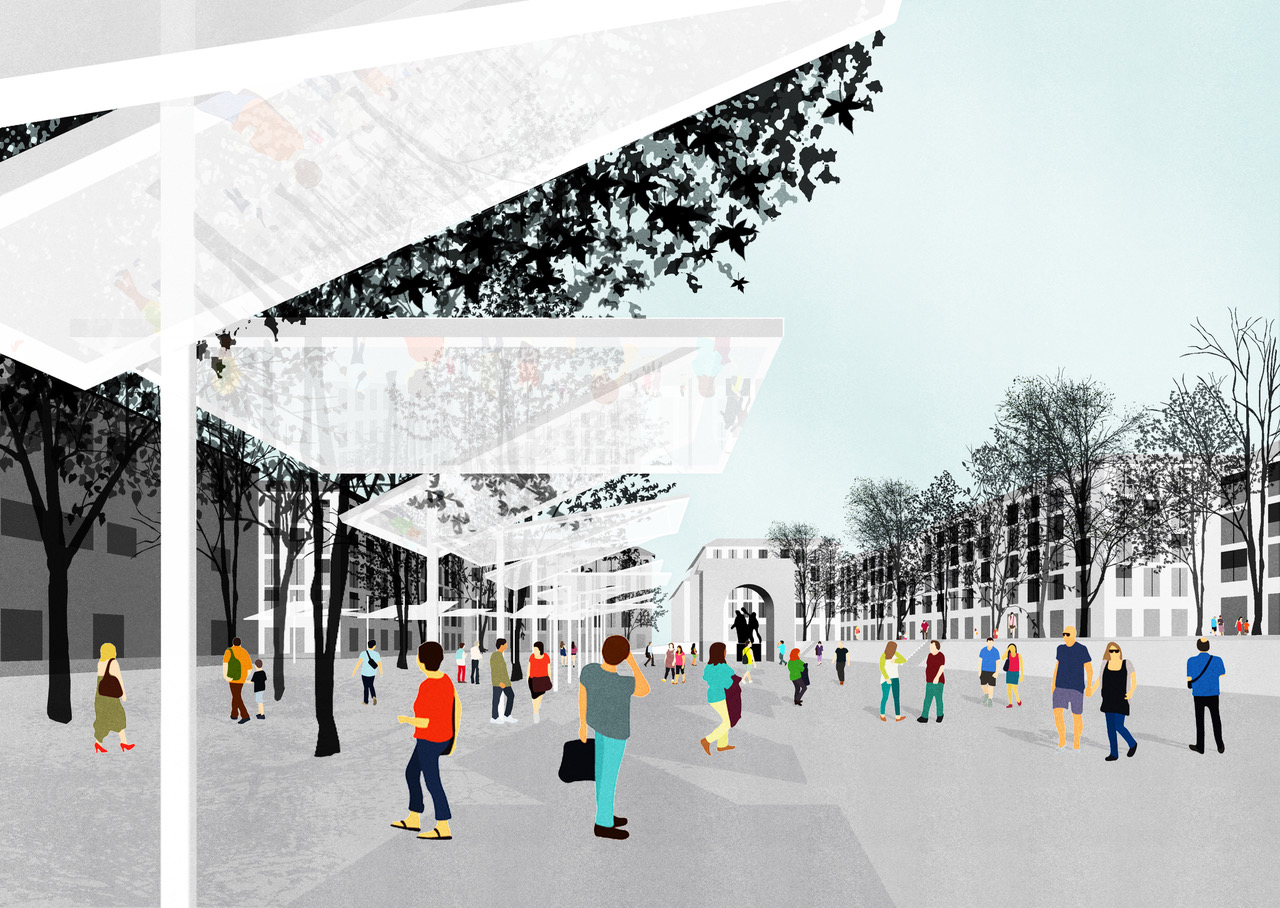La Vallita Mágica is both an urban activism strategy and a prototype of civic design, which would allow many public schools without much space, located next to squares and parks in congested urban environments, to use part of these as one more playground for their students.
Many of the public schools in the center of Madrid have small playgrounds, sandwiched between buildings. They are noisy, without views and without sunlight, conditions that have a negative impact on the health and development of young schoolchildren. Buying lots to expand these patios does not seem economically feasible given that the center of Madrid is dense and expensive. This same situation can be extrapolated to other cities in Spain. For those schools located in squares and parks, La Vallita Mágica could be a feasible and almost immediate solution.
In this sense, the Pi y Margall Center for Infant and Primary Education in Plaza Dos de Mayo in Madrid is a good case study: at the same time that children are at school, the square that gives access to the school is practically empty, and it will be empty until the end of the working day, when it will be filled with people having a drink on the terraces or in the square. The school is publicly owned. The square is publicly owned. Couldn’t a part of this square be prepared to serve as a school yard just when this square is empty, and do it in conditions in which the privacy and safety of children can be guaranteed?
The squares need street furniture, which, if not placed, will end up privatized in the form of terraces for bars and restaurants. The squares need seats and shadows that can be vegetation or in the form of pergolas that, in addition, have a structure capable of mounting solar panels and other useful elements for the city.
In Plaza 2 de Mayo, we could have pergolas that would shade its central part, play with the trees and perhaps add a little more green to the whole. During school hours, when the square is empty, the pergola lowers and closes a section of the square, becomes a fence and allows the school to use part of the square for outdoor activities.
It would be a series of standard mechanisms, already commonly used, tested and safe. They only need small design adjustments to adapt them to this new use.

